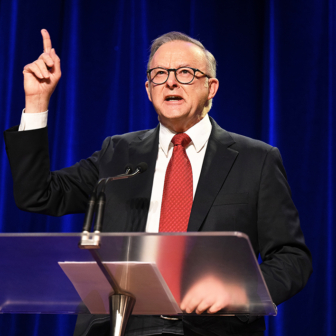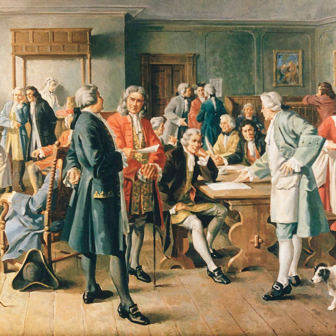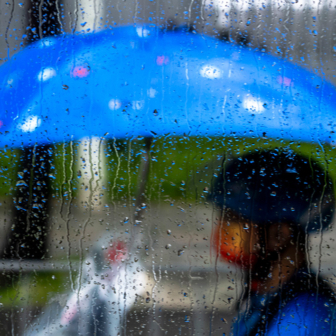The latest YouGov poll (11–15 April) has Labor on 53 per cent of the two-party vote, the latest Resolve poll (9–13 April) has Labor on 53.5 per cent, and the latest Morgan poll (7–13 April) has Labor on 54.5 per cent. These represent a swing to Labor since the last election of between 0.9 percentage points (YouGov) and 2.4 percentage points (Morgan). They show Labor not only doing better than last time; they show Labor pulling away from the Coalition halfway through the official campaign.
The last time Labor recorded a two-party vote of 53 per cent was in 1983, when a swing to Labor of 3.6 points saw Bob Hawke replace Malcolm Fraser as prime minister; the last time it recorded a two-party vote even close to 54.5 per cent (54.1 per cent) was in 1946, when voters re-elected Labor notwithstanding a swing of 3.9 points from Labor’s notional 58.2 per cent two-party vote in 1943. (Since the two-party-preferred was not yet a glint in Malcolm Mackerras’s eye, the 1943 and 1946 results were estimated retrospectively.)

Recent national polls, election 2025. Source (with notes): Wikipedia.
On the electoral pendulum, created by Mackerras, a 53 per cent vote share might be expected to take Labor’s current majority from three to seven; a 53.5 per cent share, from three to ten; and a 54.5 per cent share, from three to twelve.
What do these polls have in common that sets them apart from the polls that aren’t quite as rosy for Labor? To answer this question we need to look, first, at the primary (or first-preference) votes, and then try to discover how each of the polls arrives at a two-party-preferred figure.
What the best polls for Labor have in common, surprisingly, is not a Labor primary higher than the 32.6 per cent Labor recorded in 2022. YouGov estimates Labor’s primary vote share at 33 per cent, Morgan has it at 32 per cent and Resolve’s figure is 31 per cent. Of the other polls — Newspoll (14–17 April), Freshwater (14–16 April), Essential (9–14 April) — only Newspoll has Labor with a higher primary vote (34 per cent) than it recorded in 2022; Freshwater’s estimate is 32 per cent and Essential’s 31 per cent.
On the other hand, the polls that show Labor increasing its share of the two-party vote do have the Coalition’s primary vote lower than the 35.7 per cent it received in 2022: Resolve’s estimate is 34 per cent; Morgan’s 33.5 per cent; YouGov’s 33 per cent. These estimates are higher than Essential’s (32 per cent) and slightly lower than Newspoll’s (35 per cent), but much lower than Freshwater’s (39 per cent) — the latter an improvement on the Coalition’s 2022 vote that isn’t noted, much less discussed, by the Australian Financial Review, which commissioned the poll.
By coincidence, Essential, which provides the lowest estimate of the Coalition’s primary vote, does qualitative work (which it declares) for the Labor Party, and Freshwater, which has the highest estimate of the Coalition’s primary vote, works (which it, too, declares) on marginal seats for the Liberal Party. The difference between their estimates of the Coalition’s vote is huge: seven percentage points.
Not only do the polls that have Labor doing better than in other polls report a drop in the Coalition’s primary vote since the last election; they also record a boost in the vote share for the Greens. The Greens won 12.2 per cent of the national vote in 2002, and both Freshwater and Newspoll (12 per cent) have the Greens doing no better than that. But Morgan has the Greens at 14.5 per cent, and both YouGov and Resolve (along with Essential) have them at 13 per cent. Insofar as this is an election about housing — rental housing, not least — and an election when most voters are not Boomers, the Greens could well lift their vote share even if (as some of the single-seat polls suggest) their seat share falls.
Then there are the votes for smaller parties and independents. In 2022, they added up to a sizeable proportion (19.5 per cent) of the electorate, one that most but not all the polls suggest is now larger. Support for Pauline Hanson’s One Nation (5 per cent in 2022) is estimated to have grown to 9 per cent (Essential), 7 per cent (Newspoll and YouGov) or 6 per cent (Morgan and Resolve).
The only other party for which some of the polls provide estimates is Clive Palmer’s new party, Trumpet of Patriots, presumably because it is seen as the successor to the United Australia Party, which received 4.1 per cent of the vote in 2022. Both YouGov and Essential estimate the support for Trumpets of Patriots to be 2 per cent; Morgan’s estimate is 1 per cent.
Support for every other party — in 2022 there were more than two dozen — is reported by the polls under “Other.” For Newspoll, “Other” includes One Nation; for Newspoll, Freshwater and Resolve, “Other” includes Trumpets of Patriots. The level of support for independent candidates — teals included — is also grouped, or concealed, under “Other.”
There is no clear relationship between the estimated size of the “Others” — here, meaning everyone other than Labor, the Coalition and the Greens — and how well Labor is doing. The estimates for “Other” provided by Freshwater (17 per cent) is at the bottom of the range — perhaps a reflection of the fact that its estimate for the Coalition (39 per cent) is so high. The estimates provided by Newspoll (19 per cent), Morgan (20 per cent), Essential (20 per cent) and YouGov (21 per cent) are in the middle of the range. The estimate provided by Resolve (23 per cent) is at the top of the range — a function of the fact that since Resolve doesn’t offer a “don’t know” option when it asks respondents how they intend to vote, a disproportionate number (12 per cent, no less) say they will vote independent (5.3 per cent having done so in 2022).
What do we know about how pollsters deal with the Greens — as well as with One Nation, Trumpets of Patriots, independents and “others” — when they calculate the all-important two-party-preferred?
The only pollsters under any obligation to explain this are those who are members of the Australian Polling Council, established after the 2019 election and the failure of all the polls to predict the result. Of the six pollsters who have produced two-party estimates in the last week or so, only Essential, Newspoll (via Pyxis) and YouGov are APC members; each has gone some way to disclose its methods. So has Morgan. Freshwater and Resolve haven’t.
Practices, as well as levels of disclosure, vary widely. Some pollsters follow the preference flows at earlier elections (principally, the 2022 election) even if they make some adjustments along the way. Some simply accept what respondents say about how they would allocate their preferences. Others go down both roads — usually, though not always, publishing two sets of results.
Morgan allocates preferences “based on how Australians voted at the 2022 Federal Election.” In 2022, the preference flows to Labor were 85.7 per cent from the Greens, 38.1 per cent from the UAP (perhaps Morgan’s baseline for allocating preferences from Trumpets of Patriots?) and 35.7 per cent from One Nation.
Allocated, too, were widely disparate proportions of the votes cast for other parties and candidates (more than 1.5 million) whose specific support in 2025 is not recorded by Morgan or by any of the other polls. Of these, by far the biggest group (776,169 votes) are those cast for an independent (not necessarily a teal), 63.8 per cent of whose preferences flowed to Labor. By contrast, of the votes cast for the next biggest group, the Liberal Democratic Party (252,963 votes), only 28.2 per cent flowed to Labor. Overall, Labor secured 53.9 per cent of the preferences allocated by those who voted for these other parties and candidates. Inevitably, given such a mixed bag — a bag whose composition can be expected to vary from election to election — pollsters must make judgements of their own.
While Newspoll asks respondents to rank Labor and the Liberals/Nationals (and/or the Liberal Nationals in Queensland), it too calculates the two-party vote not by following these responses but “according to preference flows at previous elections.” Which elections — state as well as federal? — it doesn’t say. Nor does it say how closely it follows them. But in February it announced that it would be allocating to Labor a smaller proportion of the One Nation vote than had flowed to Labor in 2022.
YouGov is also alive to the fact that the 2025 contest isn’t entirely comparable with what, in some ways, was an “extraordinary” contest in 2022; for one thing, as it points out, Labor is now the incumbent not the challenger. Accordingly, YouGov has shifted to “a combination of stated preferences and past voting behaviour” — the later, a nod not to how respondents recall voting but to the Australian Electoral Commission’s calculations in 2022 and at “previous Australian elections.”
Essential, by contrast, depends on respondents’ stated preference rather than historical flows. The only exception is for respondents on whom it has had to “lean” to extract a first preference; for these respondents, Essential uses “[p]reference flows from previous federal and state elections” (it doesn’t say which) to estimate their notional two-party vote. Where respondents decline to state even a first preference, Essential doesn’t assign a two-party preference. The final figure it produces, unlike every other pollster’s, is a “2PP+”. This is the two-party vote nominated by respondents (about 95 per cent of the sample), not a distribution adding to 100 that purports to apply to the whole sample. (The fact that it doesn’t add to 100 is indicated by “+”.)
Resolve says nothing about how it allocates preferences — not in its latest iteration, anyway. In its previous poll (26–29 March), it reported two sets of figures: one, 50–50, based on how respondents themselves would allocate preferences; the other, 51–49, to Labor, based on the AEC’s flow in 2022. In its more recent poll, perhaps there was no difference between what the two measures produced; or perhaps there was a difference, and Resolve simply decided that one was more credible than the other. Earlier in the year, the Sydney Morning Herald, which together with the Age commissions the poll, used the fact that respondent-allocated preferences had Labor trailing, 45–55 — a “shock poll” — to declare that Labor was “on course for election defeat” (18–23 February). But based on the preference flow in 2022, which was also published, Labor was trailing more narrowly, 48–52, and the road to defeat wasn’t quite as clear.
Freshwater might be the only poll in this group never to have said a word about how it handles preferences. Certainly, its most recent poll says nothing about it.
Whether the different ways in which the two-party vote is calculated helps explain why some polls have Labor pulling away from the Coalition is more difficult to say. Morgan, the only poll claiming to follow the 2022 distribution without owning to adjustments of any kind, appears to have calculated that about 57 per cent of “Others” will preference Labor; this is slightly higher than the flow to Labor (53.9 per cent) from “Others” in 2022.
Newspoll, in a poll that implies it largely follows the 2022 count, appears to have calculated that a similar proportion (about 56 per cent) of the “Others” (including Trumpets of Patriots) will preference Labor — assuming the proportion of One Nation voters doing so will be somewhat greater than in 2022 (25 per cent, say, not 36 per cent); in 2022, the distribution from the AEC (including the UAP) was 49.5 per cent.
If we assume, in the absence of any other information to the contrary, that Freshwater has also used the 2022 results in calculating the flow of preferences from the Greens (the only other party, apart from Labor and the Coalition, on which it reports), then the preference flow to Labor from “Others” (about 47 per cent) would be slightly less than that reported by the AEC in 2022 (46 per cent) — about 47 per cent, the same flow (about 48 per cent) that Newspoll would have arrived at had it stuck by the 2022 flow to Labor of One Nation votes.
Had YouGov’s distribution of votes from the Greens, One Nation and Trumpet of Patriots stuck closely to the AEC’s 2022 distribution for the Greens, One Nation, and the UAP, then about 48 per cent of the preferences from “Others” would again have flowed to Labor.
That Morgan’s flow, and Newspoll’s, as best we can calculate it, are slightly greater than the 2022 flow recorded by the AEC may suggest that both pollsters are expecting the flow to Labor this time to be greater than it was last time. Or — given that we don’t have their exact numbers — it may be due to measurement error. The fact that the flows assumed by Freshwater and YouGov appear to be about the same as in 2022 suggests that these polls are expecting no change in the distribution.
The two outliers, by these calculations, are Essential and Resolve — one with a much lower flow to Labor in 2022, the other with a much higher. If Essential’s stated preferences in 2025 were much the same as the actual preferences in 2022, then only about 26 per cent would have flowed to Labor, and not the 53.9 per cent of 2022. On the other hand, if Resolve’s stated preferences in 2025 were much the same as the actual preferences in 2022, then as many as about 71 per cent would have flowed to Labor (not 2022’s 49.5 per cent).
It follows that Labor’s relatively low two-party vote in the Essential poll (around 52.5 per cent, if we ignore the “undecided”) could be partly a function of its relatively conservative assumptions about the flow of preferences from “Others” (20 per cent of the total) to Labor. Conversely, Labor’s relatively high two-party vote in the Resolve poll (53.5 per cent) could be partly a function of its relatively generous assumptions about the flow of preferences from “Others” (17 per cent of the total) to Labor.
With more detailed information about vote counts and preference flows — information held back by the pollsters — everything would be a lot clearer.
What’s different about Morgan, Resolve and YouGov is that they have Labor not only being returned but being returned with an increased majority. Newspoll and Essential also point to the government being returned, possibly in minority. Only Freshwater gives the Coalition any real chance. With the campaign yet to run its course and each of the polls still to give their final estimates, all this could change.
How good the polls prove to be will depend on their estimates of the parties’ first preferences — this, above all, is what brought them undone in 2019 — and their estimates of the two-party-preferred, the estimates against which their performance will be most closely evaluated.
Morgan overestimated Labor’s primary vote and its two-party-preferred in 2019 and then, again, in 2022. YouGov, which didn’t publish any figures in 2022, overestimated Labor’s primary vote in 2019. But Resolve, which wasn’t established until after the 2019 election, underestimated Labor’s primary vote (and the Coalition’s) in 2022 and underestimated Labor’s two-party share.
As for the polls that have Labor less well placed, Newspoll overestimated Labor’s primary vote and its two-party-preferred in 2019 and then, again, in 2022. Essential overestimated Labor’s primary vote and its two-party-preferred in 2019 and overestimated Labor’s primary vote (while underestimating its two-party share) in 2022. Freshwater wasn’t around.
The last couple of elections, therefore, suggest that the polls — not only those that have Labor well ahead but even those that give Labor a narrower lead — could be overestimating Labor’s current advantage. But the pattern is mixed.
Pollsters, we should always bear in mind, try to learn as they go. In their final polls, some will use larger samples, some will offer respondents facsimiles of the ballot papers they will confront — or have already confronted — at the polling booths, and some will try to sense the “vibe.” Their incentives to get things “right” are considerable. •




